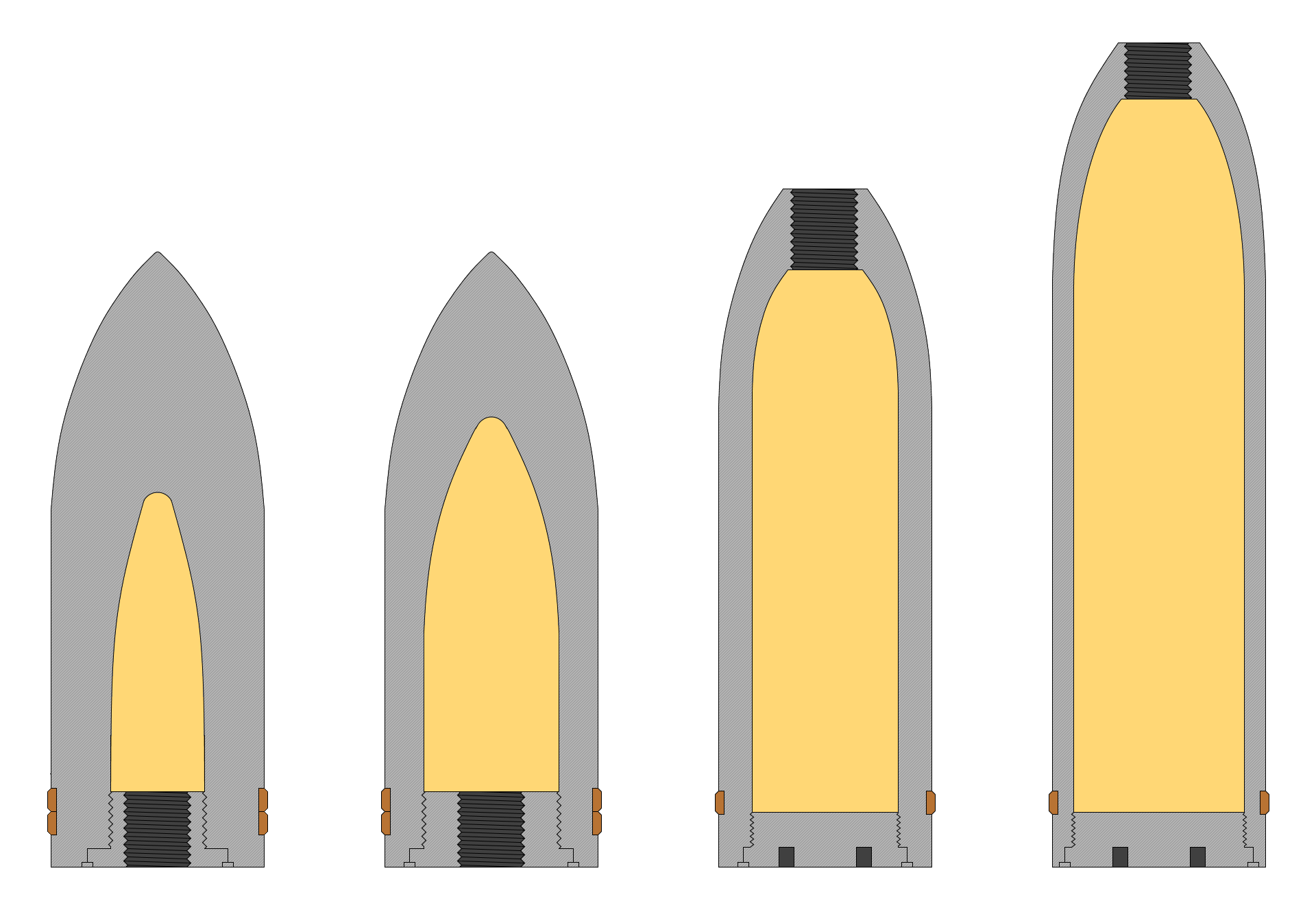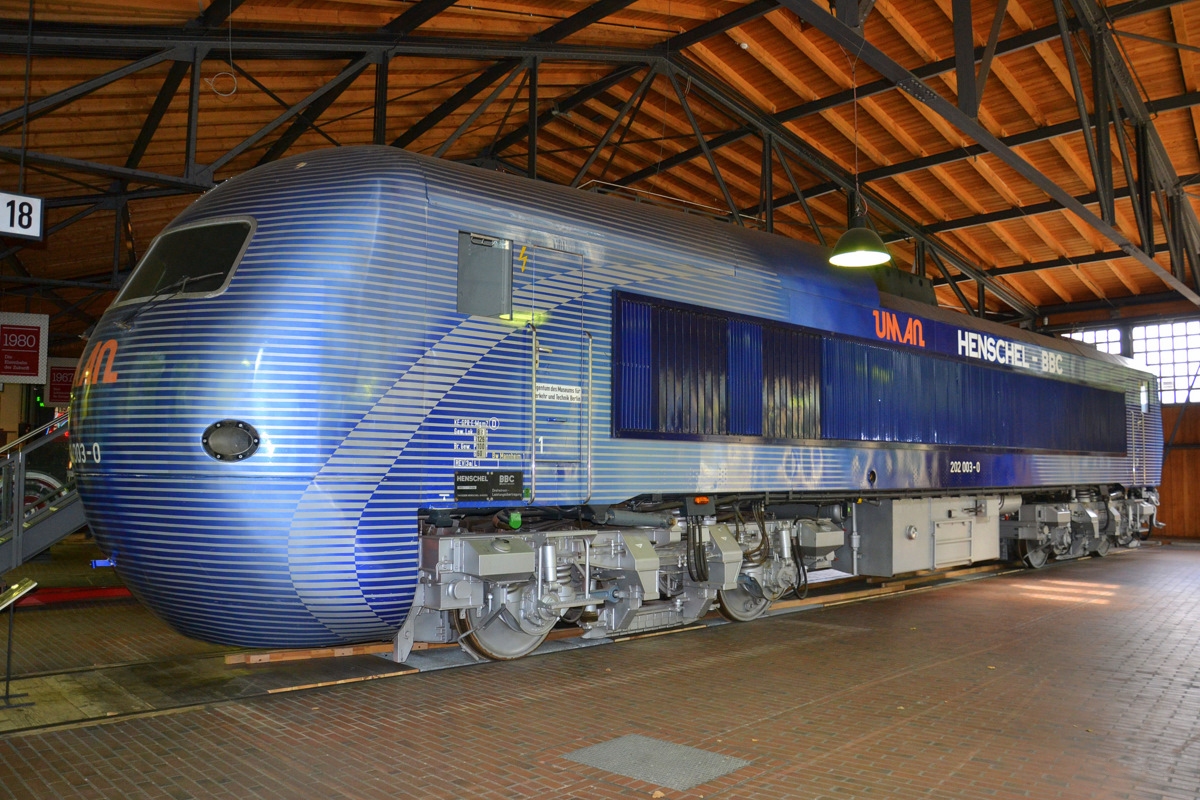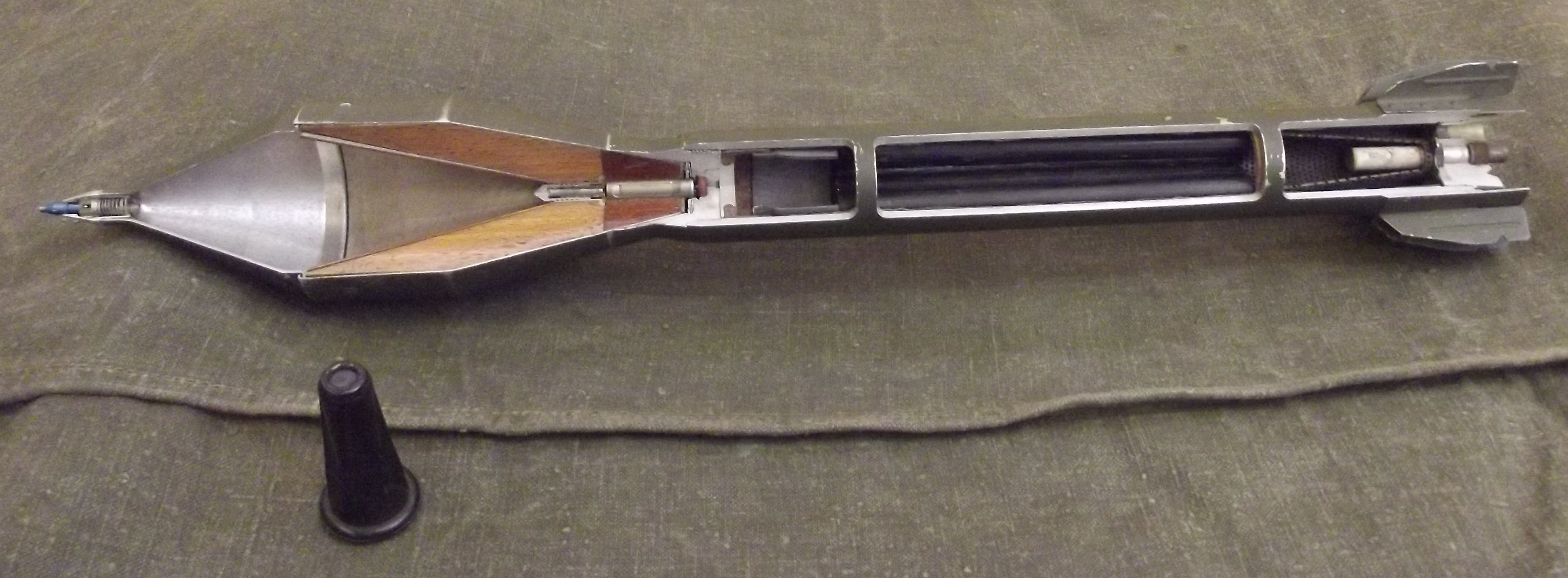|
R4M
R4M, abbreviation for ''Rakete, 4 kilogramm, Minenkopf'' ( en, Rocket, 4 kilogram, Mine-head), also known by the nickname ''Orkan'' ( en, Hurricane) due to its distinctive smoke trail when fired, was a folding-fin air-to-air rocket used by the Luftwaffe at the end of World War II. The R4M was used on several late war German combat aircraft, most notably the Messerschmitt Me 262, and could be fired from open ramps under aircraft wings or from tubes inside under-wing rocket pods. It featured a high capacity "mine shell" equivalent warhead filled with of the explosive-mixture ''HTA 41'' (also known as ''HTA 15''), which consists of 40% Hexogen (RDX), 45% TNT and 15% aluminium. The shell-walls of the warhead were only thick. Besides the air-to-air warhead the rocket could also be outfitted with shaped charge warheads for air-to-ground use, then called R4HL for ''hohlladung'' ( en, hollow charge). These warheads were called ''Panzerblitz'' ( en, Armor-lightning) and existed in t ... [...More Info...] [...Related Items...] OR: [Wikipedia] [Google] [Baidu] |
Mine Shell
A mine shell (from the German term ''Minengeschoß'', "mine shot"), also known as High-Explosive, High-Capacity (HEHC) in British military nomenclature, is a military explosive shell type characterized by thin (usually steel) shell walls and a correspondingly high quantity of explosives, much higher than the traditional high explosive shell type per caliber, meaning that mine shells trade fragmentation effect (due to the thinner shell walls) for a higher pressure wave effect when comparing to traditional high explosive shells. Mine shells were originally developed during the mid to late 1800s against fortresses prior to rebar but got a new role during World War II against air targets as reinforced fortresses had made the original use of the type obsolete around World War I. Effect, construction and use The mine shell is a more explosive version of the common high-explosive and high-explosive fragmentation shells, relying on inflicting damage primarily through the blast ... [...More Info...] [...Related Items...] OR: [Wikipedia] [Google] [Baidu] |
Messerschmitt Me 262
The Messerschmitt Me 262, nicknamed ''Schwalbe'' (German: "Swallow") in fighter versions, or ''Sturmvogel'' (German: "Procellariidae, Storm Bird") in fighter-bomber versions, is a fighter aircraft and fighter-bomber that was designed and produced by the German aircraft manufacturer Messerschmitt. It was the world's first operational Jet aircraft, jet-powered fighter aircraft. The initial design of what would become the Me 262 started in April 1939, prior to the start of the World War II, Second World War. While the aircraft performed its maiden flight on 18 April 1941, this was using Reciprocating engine, piston engine instead of jet propulsion; it was not until 18 July 1942 that the first jet-powered flight was performed. Progress on the project was delayed by problems with engines, metallurgy and top-level interference from figures such as Hermann Göring, head of the Luftwaffe, and Adolf Hitler. The latter advocated from the Me 262 to be operated as a Ground-attack aircraft, ... [...More Info...] [...Related Items...] OR: [Wikipedia] [Google] [Baidu] |
Air-to-air Rocket
An air-to-air rocket or air interception rocket is an unguided projectile fired from aircraft to engage other flying targets. They were used briefly in World War I to engage enemy observation balloons and in and after World War II to engage enemy bombers. Fighters were too maneuverable to be effectively engaged with rockets. History World War I Rockets were used in World War I to engage observation balloons and airships. Success rates were low and the rockets were dangerous to handle in the early fighters built from highly flammable materials. By the end of the war they were replaced by the incendiary Pomeroy bullets. The Pomeroy bullet was developed to strike German Zeppelin airships, by igniting the hydrogen in the balloon. They did not always work. One of the notable rockets from World War I was the Le Prieur rocket which had a range of about , limited by inaccuracy. It was first used in the Battle of Verdun. Interwar period The first known example of a successful attack o ... [...More Info...] [...Related Items...] OR: [Wikipedia] [Google] [Baidu] |
Panzerblitz (missile)
''Panzerblitz'' is a German anti-tank unguided aerial rocket developed during the Second World War. The missile was based on the R4M ''Orkan'' air-to-air rocket used by the Messerschmitt Me 262. It was fitted with either an -diameter standard warhead, in ''Panzerblitz'' I, or a -diameter hollow charge warhead, in the ''Panzerblitz'' III. It was intended to be operated by the Henschel Hs 132, which would carry up to eight rockets, complementing or even replacing the cannon armament in the tank-destroying role. The 80mm model was tested extensively in early 1945 from Focke-Wulf Fw 190 The Focke-Wulf Fw 190, nicknamed ''Würger'' ("Shrike") is a German single-seat, single-engine fighter aircraft designed by Kurt Tank at Focke-Wulf in the late 1930s and widely used during World War II. Along with its well-known counterpart, th ...s, but neither ''Panzerblitz'' I nor ''Panzerblitz'' III (earmarked exclusively for the Hs 132) were ready for use by the German surrender in May 19 ... [...More Info...] [...Related Items...] OR: [Wikipedia] [Google] [Baidu] |
Hexogen
RDX (abbreviation of "Research Department eXplosive") or hexogen, among other names, is an organic compound with the formula (O2N2CH2)3. It is a white solid without smell or taste, widely used as an explosive. Chemically, it is classified as a nitroamine alongside HMX, which is a more energetic explosive than TNT. It was used widely in World War II and remains common in military applications. RDX is often used in mixtures with other explosives and plasticizers or phlegmatizers (desensitizers); it is the explosive agent in C-4 plastic explosive. It is stable in storage and is considered one of the most energetic and brisant of the military high explosives, with a relative effectiveness factor of 1.60. Name RDX is also known, but less commonly, as cyclonite, hexogen (particularly in Russian, French, German and German-influenced languages), T4, and, chemically, as cyclotrimethylenetrinitramine. In the 1930s, the Royal Arsenal, Woolwich, started investigating cyclonite to use ... [...More Info...] [...Related Items...] OR: [Wikipedia] [Google] [Baidu] |
MG 151/20 Cannon
The MG 151 (MG 151/15) was a German 15 mm aircraft-mounted autocannon produced by Waffenfabrik Mauser during World War II. Its 20mm variant, the 20 mm MG 151/20 cannon, was widely used on German Luftwaffe fighters, night fighters, fighter-bombers, bombers and ground-attack aircraft. Salvaged guns saw post-war use by other nations. Development and wartime history (MG 151/20) The pre-war German doctrine for arming single-engine fighter aircraft mirrored that of the French. This doctrine favoured a powerful autocannon mounted between the cylinder banks of a V engine and firing through the propeller hub, known as a ''moteur-canon'' in French (from its first use with the Hispano-Suiza HS.8C engine in World War I, on the SPAD S.XII) and by the cognate ''Motorkanone'' in German by the 1930s. The weapon preferred by the French in this role was the most powerful 20mm Oerlikon of the time, namely the FFS model, but this proved too big for German engines. Mauser was given t ... [...More Info...] [...Related Items...] OR: [Wikipedia] [Google] [Baidu] |
Hollow Charge
A shaped charge is an explosive charge shaped to form an explosively formed penetrator (EFP) to focus the effect of the explosive's energy. Different types of shaped charges are used for various purposes such as cutting and forming metal, initiating nuclear weapons, penetrating armor, or perforating wells in the oil and gas industry. A typical modern shaped charge, with a metal liner on the charge cavity, can penetrate armor steel to a depth of seven or more times the diameter of the charge (charge diameters, CD), though greater depths of 10 CD and above have been achieved. Contrary to a misconception (possibly resulting from the acronym for '' high-explosive anti-tank'', HEAT) the shaped charge EFP jet does not depend in any way on heating or melting for its effectiveness; that is, the EFP jet from a shaped charge does not melt its way through armor, as its effect is purely kinetic in nature – however the process does create significant heat and often has a significa ... [...More Info...] [...Related Items...] OR: [Wikipedia] [Google] [Baidu] |
Panzerschreck
''Panzerschreck'' (lit. "tank fright", "tank's fright" or "tank's bane") was the popular name for the ''Raketenpanzerbüchse'' 54 ("Rocket Anti-armor Rifle Model 54", abbreviated to RPzB 54), an 88 mm reusable anti-tank rocket launcher developed by Nazi Germany in World War II. Another earlier, official name was ''Ofenrohr'' ("stove pipe"). The ''Panzerschreck'' was designed as a lightweight infantry anti-tank weapon and was an enlarged copy of the American bazooka. The weapon was shoulder-launched and fired a fin-stabilized rocket with a shaped-charge warhead. It was made in smaller numbers than the '' Panzerfaust'', which was a light, disposable anti-tank weapon that used a system not unlike those of recoilless rifles. History The ''Panzerschreck'' development was initially based on the American " bazooka", captured during the Tunisian campaign, November 1942. The ''Panzerschreck'' was larger and heavier than its American counterpart – the ''Panzerschreck'' ha ... [...More Info...] [...Related Items...] OR: [Wikipedia] [Google] [Baidu] |
German Museum Of Technology
(German Museum of Technology) in Berlin, Germany is a museum of science and technology, and exhibits a large collection of historical technical artifacts. The museum's main emphasis originally was on rail transport, but today it also features exhibits of various sorts of industrial technology. In 2003, it opened both maritime and aviation exhibition halls in a newly built extension. The museum also contains a science center called Spectrum. History The Museum of Traffic and Technology (') was founded in 1982 and assumed the tradition of the Royal Museum of Traffic and Construction (') which was opened in the former station building in 1906. The present-day museum is located on the former freight yard attached to the in the district of Berlin, including two historic roundhouses and several office buildings. Renamed ' in 1996, the exhibition area was gradually expanded. An adjacent new building complex was inaugurated in 2003, topped by a prominent US Air Force Douglas C-47B ... [...More Info...] [...Related Items...] OR: [Wikipedia] [Google] [Baidu] |
Autocannon
An autocannon, automatic cannon or machine cannon is a fully automatic gun that is capable of rapid-firing large-caliber ( or more) armour-piercing, explosive or incendiary shells, as opposed to the smaller-caliber kinetic projectiles (bullets) fired by a machine gun. Autocannons have a longer effective range and greater terminal performance than machine guns, due to the use of larger/heavier munitions (most often in the range of , but bigger calibers also exist), but are usually smaller than tank guns, howitzers, field guns or other artillery. When used on its own, the word "autocannon" typically indicates a non-rotary weapon with a single barrel. When multiple rotating barrels are involved, such a weapon is referred to as a "rotary autocannon" or occasionally "rotary cannon", for short (particularly on aircraft). Autocannons are heavy weapons that are unsuitable for use by infantry. Due to the heavy weight and recoil, they are typically installed on fixed mounts, whe ... [...More Info...] [...Related Items...] OR: [Wikipedia] [Google] [Baidu] |
Shaped Charge
A shaped charge is an explosive charge shaped to form an explosively formed penetrator (EFP) to focus the effect of the explosive's energy. Different types of shaped charges are used for various purposes such as cutting and forming metal, initiating nuclear weapons, penetrating armor, or perforating wells in the oil and gas industry. A typical modern shaped charge, with a metal liner on the charge cavity, can penetrate armor steel to a depth of seven or more times the diameter of the charge (charge diameters, CD), though greater depths of 10 CD and above have been achieved. Contrary to a misconception (possibly resulting from the acronym for '' high-explosive anti-tank'', HEAT) the shaped charge EFP jet does not depend in any way on heating or melting for its effectiveness; that is, the EFP jet from a shaped charge does not melt its way through armor, as its effect is purely kinetic in nature – however the process does create significant heat and often has a signific ... [...More Info...] [...Related Items...] OR: [Wikipedia] [Google] [Baidu] |








